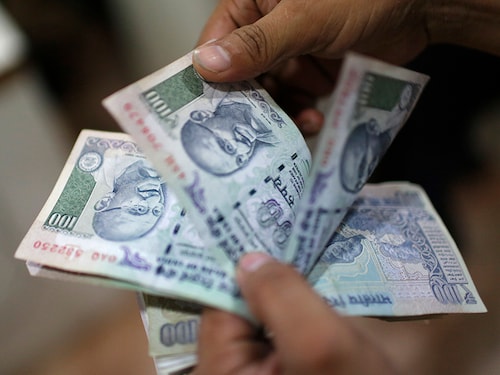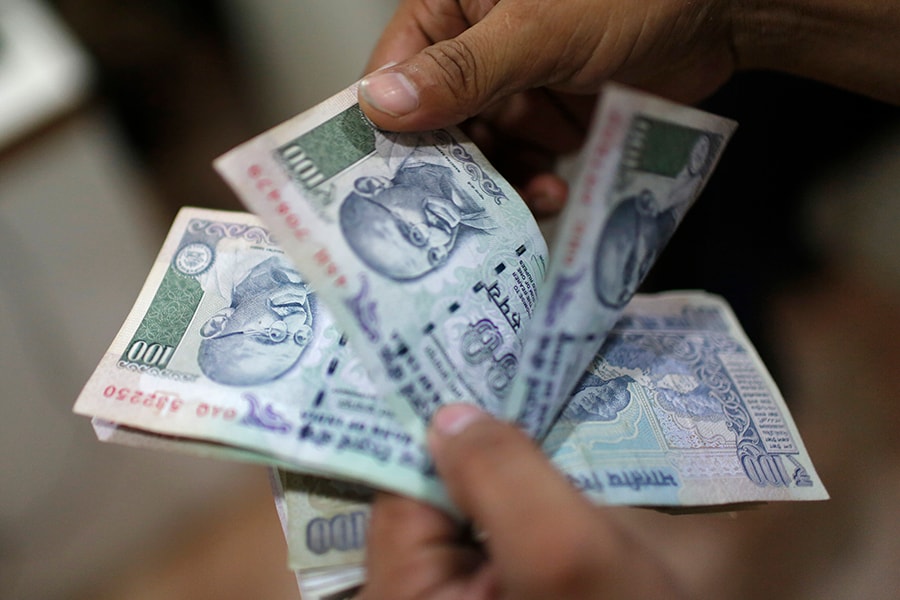Demonetisation: How banks can sift 'Red flags' of innovative money laundering me
Banks are under a substantial load to modify their existing AML systems and processes to counter these red flags



Image: Adnan Abidi/Reuters
Over the years, the Government of India has undertaken various initiatives to control black money, combat financing of terrorism, and curb the circulation of counterfeit currency in the economy. Demonetisation, is the most recent and boldest measure taken so far, with a widespread impact on the country.
KPMG in India has put together a research report, ‘The Colour of Money: Black or White?’ to analyse the impact of demonetisation on money laundering. According to the research, it has largely impacted the counterfeit currency circulation, alternative remittance system such as ‘hawala’ and parallel networks of illegal money changers such as ‘hundi’, ‘angadia’ etc. It is also expected to have a major influence on inflation and availability of liquidity with the banks, which could affect lending rates.
The research serves two purposes. First, it attempts to collate various methods which individuals and entities are using to convert unaccounted cash. Second, it provides an overview of the modifications to the existing Anti Money Laundering (AML) systems that will help banks to spot ‘red flags’ of money laundering. The Central Government has announced heavy penalty for the deposit of cash which does not match the income tax returns filed by the individual, and to end-run these provisions, various money hoarders and facilitators are resorting to widespread and innovative methods.
As per the analysis, most of the transaction monitoring alerts must be redesigned basis the limits provided by the Ministry of Finance (MoF) for both existing accounts and new accounts opened during the period November 9 to December 30, 2016.
Red flags of money laundering
For ease of understanding, we have segregated the red flags pertaining to non-money mule activities and money mule activities. Non-money mule related red flags indicators are:
&bull Gold purchases have seen a sudden spurt, leading to increased activities in accounts of gold traders, their associates & family members. Cash deposits have been made in home and multiple branches. There are also attempts to structure deposits to bypass monitoring thresholds and round tripping of funds in select customer accounts of the trader.
&bull Temple hundis are seeing a sudden increase in cash deposits as offerings. High-value investments and random high-value commodity purchases in accounts. Opening of new accounts in the name of trust associates (beneficiaries, authorised signatories).
&bull Backdated fixed deposit refer to large amounts of FDs booked in the last three months (prior to 9 November 2016) and pending or inadequate KYC documentation for new ones. Also used are high encashment of FDs in the next three months along with high number of loan foreclosures prior to announcement of demonetisation.
&bull Payment of advance salaries can be seen through high value and third-party cash deposits in the accounts of employees of a specific organisation. Some of them are also creating multiple salary accounts for one employee. There is also an increase in third party cheque issues from the salary accounts (both new and existing).
&bull Agricultural income includes opening of new accounts with high volumes of activity (deposit and withdrawals), third-party cheque issues from the account and profile mismatch of customers claiming to have earned agricultural income for the current financial year.
&bull Donations to political parties are seeing a sudden surge in cash deposits. There is rise in random high-value purchases of assets/commodities followed by sale and multiple and large withdrawals post 30 December 2016 for non-election related purposes.
&bull Cash-deficit firms includes elements such as high value cash in hand, declarations and deposits, formation of mergers or new subsidiaries reporting high revenue, clearance of bank overdrafts in cash and subsequent cash out or redrawing reduced overdraft balances.
Money mule related red flag indicators are:
&bull Short-term loans – Shows a trend of cash deposits by multiple individuals into their own accounts from the same locality, household, club, party, or firm below the threshold. Withdrawal of funds immediately or within a gap of a few weeks and possible Politically Exposed Person (PEP) links.
&bull Bank note mafia – A trend of multiple cash deposits by the same individuals from the same locality, club, or party, just below the threshold, at various branches of the same bank. Subsequent withdrawal of funds of a lesser amount and possible PEP links.
&bull Pradhan Mantri Jan dhan Yojna and Farmer accounts - Sudden spurt of deposits and withdrawals activities in the account without the knowledge of the account holder. Multiple cash deposits in the same branch or different branches away from the locality of the account holder, in other banks, by the same set of individuals or the same individual (third party or parties) in the account subsequent withdrawal of all funds.
Potential next steps for banks
Considering that the government and the Income Tax Department have requested high vigilance from the banks, it is likely that there will be a surge of alerts triggered by the transaction monitoring system. Banks are under a substantial load to modify their existing AML systems and processes to counter these red flags. Their immediate steps can be:
&bull Customer onboarding and screening: Implement robust processes to open new accounts for cash deposit, incorporate adequate screening on new accounts or walk-in customers depositing cash and Review documents for all new accounts opened.
&bull Transaction monitoring: Re-adjust thresholds as per customer profiles such as cash-intensive
businesses and as per government directives, monitor sudden spurts in activity, pinpoint activity-profile mismatch, perform analysis of circular movement of funds for a period of at least six months, and monitor transactions in PMJDY and PEP accounts.
&bull Customer profiling and due diligence: Banks must perform extensive analytics for cash deposited by existing customers in various branches, walk-in customers for exchanging old notes in the same branch and various branches, walk-in customers quoting incorrect account numbers or fake ids, dormant accounts. Analysis of customer profiles must be linked across the same geography, households, organisations, PEP linkages, cash deposits in the various products and services availed by customers for instance loans, credit cards and mutual funds. Profile employee and vendor accounts and identify high-risk occupations and businesses.
The success of demonetisation will depend on several factors, including the continued political will of the central government and rigor with which the scheme is implemented as per its stated objectives. In our view, one of the key next steps in the fight against black money could be to mandate that the proceeds of gold sales must be credited to bank accounts above a certain threshold (for example INR 50,000) and make PAN furnishing mandatory for such transactions – this can help tackle the dilution of presently-hoarded black money and can also have a transformational impact.
By Suveer Khanna, Partner, Forensic Services, KPMG in India
First Published: Dec 14, 2016, 08:27
Subscribe Now